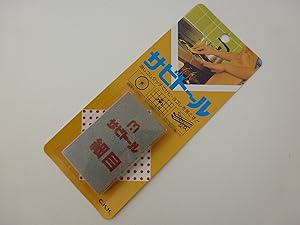- Joined
- Jan 31, 2016
- Messages
- 748
I'm visiting my parents for the Thanksgiving holiday and at my request, Dad brought out his old Boy Scout knives so I could see them. They're not special or valuable except to me, & it's pretty cool seeing the knives that Dad would have used as kid/teen. 1940s is Dad's best guess for when he got them, but he also said he got them when he was a teen in the Scouts. Dad was born in 1935 and I'm not sure what "teen" means as far as Boy Scouts is concerned.
First one's a Camillus camp style scout knife.
Dad gave this one to my brother when he was in the Boy Scouts. Unfortunately, my brother did not treat it kindly. I was able to get the rust off, but I don't have the means to do anything about those chips in the main blade.
I should have taken more "before" photos, but I only thought to snap this one after I'd worked on the blade and can opener. All of the tools were pretty much in the same condition as these, though.

& After clean up. Probably not a super fantastic job, but I didn't want to do too much for fear of messing it up and was mostly concerned with getting the worst of the rust off to prevent further damage.



The main blade doesn't have much snap left, but i gotta say it got plenty sharp after just a few swipes on the medium Sharpmaker rods (before I figured there was no point to sharpening it with those big chips in it). I bumped my fingertip against the edge while trying to open the can opener with the main blade also open and it was plenty sharp enough to draw blood without me even feeling it at first.
I saw the two piece can opener mentioned in another thread about Camillus scout knives. Is there a particular reason it was made that way?
This is the other knife Dad used in the Scouts. Western L39 if my googling is correct, but that's all I know about it. I'd love to clean it up a bit if possible, but this seems like a more daunting task than the little pocket knife and I'm not sure how to go about it. Any advice on mitigating the existing damage would be very welcome.





First one's a Camillus camp style scout knife.
Dad gave this one to my brother when he was in the Boy Scouts. Unfortunately, my brother did not treat it kindly. I was able to get the rust off, but I don't have the means to do anything about those chips in the main blade.
I should have taken more "before" photos, but I only thought to snap this one after I'd worked on the blade and can opener. All of the tools were pretty much in the same condition as these, though.

& After clean up. Probably not a super fantastic job, but I didn't want to do too much for fear of messing it up and was mostly concerned with getting the worst of the rust off to prevent further damage.



The main blade doesn't have much snap left, but i gotta say it got plenty sharp after just a few swipes on the medium Sharpmaker rods (before I figured there was no point to sharpening it with those big chips in it). I bumped my fingertip against the edge while trying to open the can opener with the main blade also open and it was plenty sharp enough to draw blood without me even feeling it at first.
I saw the two piece can opener mentioned in another thread about Camillus scout knives. Is there a particular reason it was made that way?
This is the other knife Dad used in the Scouts. Western L39 if my googling is correct, but that's all I know about it. I'd love to clean it up a bit if possible, but this seems like a more daunting task than the little pocket knife and I'm not sure how to go about it. Any advice on mitigating the existing damage would be very welcome.








